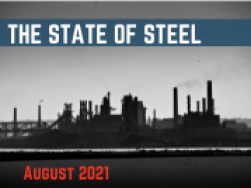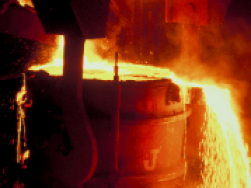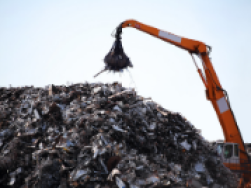State of Steel - August 2021
Pricing - Will it Slow Down?
Steel price increases continue to be announced at a regular pace. Coil continues to be in high demand and causing the tubing mills to be on forced allocation of their core product needs. As of the third week of August, the steel pricing index known at the CRU has now increased 51 weeks in a row. The CRU index has seen a 149% increase in the steel index since the first week of December and a 330% increase since a year ago in August of 2020. This marks the 12th month in a row that the CRU index has increased. For all structural tubing, Nucor Tubular and Atlas Tube (the two largest structural tubing mills) raised prices on Aug 10th by another $125/ton on HSS, pipe, mechanical, and piling products. With regards to DOM, we just received another 10% increase effective this month for a total of 15% just in the month of August. Most mill pricing has increased 13 times for a total of 89-92% overall since the beginning of October 2020. The below charts reflect a current listing of all price increases on tubing that we have seen since late August of 2020.
The Midwest aluminum premium reached new all-time highs this week ($0.31-$0.32/pound), following an announcement that Rio Tinto will reduce production at the Kitimat smelter in Canada to 35% of its 432 thousand tons per year capacity as the result of a strike. Steel plate prices resumed their upward trend following three weeks of stability, driven higher by a new round of price increases by domestic mills. Fastmarkets' weekly assessment for plate increased to $1,600/ton this week. Oil country tubular goods product prices in the US increased again in July, with Fastmarkets’ assessing the OCTG price at ~$2,050/ton, which is the highest level since February 2009. (Source: AMM)


Pricing on all continuous cast iron products continues to climb. This can be attributed to higher raw material surcharges, commodities, utilities, base price increases, and an increased cost of freight. Base prices increased in February with additional significant base price increases implemented July 1st, 2021. In July of 2021, common sizes of gray iron increased roughly ~12% and common sizes of ductile iron increased roughly ~8%. Harder to produce and specialty sizes increased significantly more than that. Effective August 1st, 2021, we have just received an additional 8% base price increase across the board on all grades and sizes. The below chart details the Dura-Bar surcharges over the last year or so.

Lead Times
Understanding lead times for steel products are important to every participant in the supply chain. Lead times for steel products are as follows (as of 8/24/21):
HRC lead times were flat this week to 8.2 weeks versus an average of ~5.5 weeks since 2016. Other product lead times declined this week with CRC lead times at 10.0 weeks, HDG lead times at 10.8 weeks, and plate lead times at 9.1 weeks. (Source: Platts)
DOM Tubing continues to be long and is anywhere from 25-34 weeks given the availability of raw steel coils and orders already on the books. We are beginning to see "Allocations" in the market place which is not a good sign for availability.
Structural Tubing mill lead times are running approximately 8-14 weeks upon receipt of order.
Dura-Bar Continuous Cast Iron mill lead times are approximately 4-12 weeks depending on size, grade, and finish.
Metal Production
In the week ended Aug 14th, US raw steel production decreased 0.2% week-over-week to 1.869mt (+26.6% YoY). US capacity utilization was 84.7% vs 65.9% last year. Year-to-date production is 58.296mt up 19.5% year-over-year from 48.767mt last year. (Source: AISI)
US Steel is planning to shutter two more blast furnaces in the 4th quarter of 2021. Their largest furnace in Gary will be shut down for approximately 10 days along with one of their furnaces in Granite City. This will continue to cause supply constraints.
Scrap
Ahead of the August buy week, market sources continue to expect shredded scrap prices to decline by $20-$30/ton month-over-month in August due to ample supplies and weakening export prices. Meanwhile, prime scrap prices are expected to remain unchanged due to tight supplies. (Source: Platts)
The outlook for September scrap prices is mixed, with current indications suggesting scrap prices will be flat to lower month-over-month dependant on grade. Market sources currently expect shredded scrap prices to decline $20-$30/ton in September. (Source: AMM)






